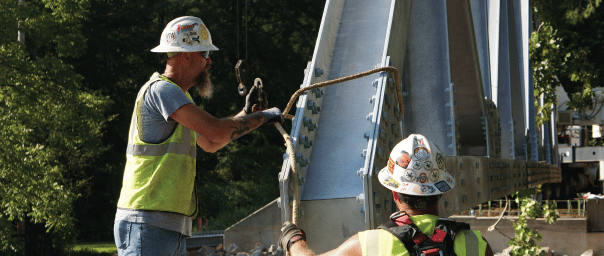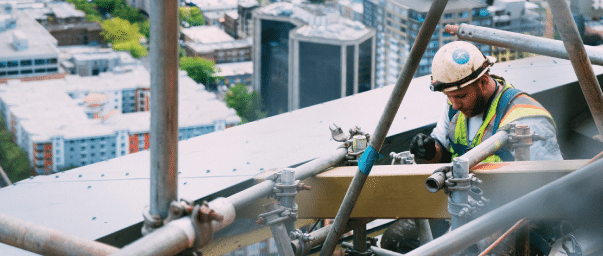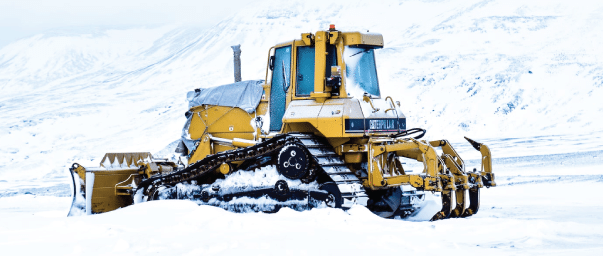With the hot days of summer ahead of us, it is important to remember how to stay safe in the endless summer heat. Just bringing a water bottle with you will not protect you from the harsh summer elements. Safety is a constant concern while at the construction site, and with these summer safety tips you can secure the safety of yourself and your crew.
Tips for Working in the Summer
Skin Protection and Sunscreen
The first tip might seem super obvious, but it’s often overlooked. And that is to apply sunscreen to all exposed areas of your skin. This doesn’t mean just once before you head out to the site. It’s essential that you reapply sunscreen throughout the day to get the full benefits and protection it offers.
Dermatologists recommend the daily use of sunscreen to prevent photoaging and skin cancer. It’s important to remember that sunscreen acts as a filter and can’t block out sun rays completely. The SPF number is how you figure out how much of the sun’s UVB rays are actually hitting your skin. For example, with SPF 30 it would take you 30 times longer to burn than if you weren’t wearing sunscreen.
Although depending on how long you’ll be outside, SPF 30 may be far too weak to protect you from UV damage.
Sunscreen is a great line of defense, however, it isn’t the only way to keep safe from the sun. Shade also provides protection from the heat that radiates from the sun. In fact, the shade tends to be 10-15 degrees cooler than being out in the sun. If shade is not an option, wearing a hat or clothing to cover exposed areas of skin can provide plenty of protection from the sun.
Drink More Fluids and Watch What You Eat
More summer safety tips include monitoring your diet and fluids. Not just for safety, but also for health reasons. Staying hydrated is necessary for those who are working directly in the heat. So drink plenty of water. Garnishing the water with lemon or lime can replenish the body with lost electrolytes, as can sports drinks such as Gatorade or Pedialyte.
Additionally, it’s also beneficial to avoid high-fat and greasy meals such as cheeseburgers or pizza. These types of meals force the body to use more energy to digest them.
Rest Thoroughly and Schedule Smart
Our next two summer safety tips is rest and smart scheduling. Rest is obviously important for many reasons. Sleep energizes and heals the body, which helps the body handle heat more efficiently. A solid eight hours of sleep can greatly improve performance at the worksite. It also guarantees REM sleep, which is crucial for healthy brain development, memory, and emotional processing.
Along with getting enough sleep, taking breaks can be valuable for crew members. This allows individuals time to cool down from the sun and avoid heat exhaustion. However, it is important to note that radical shifts from hot to cold and back to hot again make the body work harder to adjust. So instead of retreating straight into an air conditioned area, it’s better to retreat to some shade.
In addition to breaks and getting enough sleep, it’s important to establish a set schedule. During the summer the hottest parts of the day are typically between noon and 3 p.m. It would be better to use this time frame to take a lunch break when possible or even find indoor or shaded work to do until the sun is past its peak.
Know the Signs
Above all else, pay attention to yourself and others around you. Overheating, heat strokes, and other heat illnesses can hit fast if you don’t know the signs. If you’re feeling symptoms of hot skin, tiredness, heat cramps, accelerated heart rate, mental confusion, or slurred speech, stop what you’re doing and retreat to the shade and rehydrate. And if necessary, do not hesitate to dial 911.
Ignoring these warning signs can result in serious injury. It’s important to make sure that you discuss and educate yourself and others about these warning signs.
Staying safe in the summer isn’t hard, however, sometimes you need a reminder of what you’re overlooking in your daily routine. Remember these tips and share them with your team to help protect your crew against the summer heat.
Safety is a Top Priority for U.S. Bridge
For over eight decades U.S. Bridge has dedicated itself to the safety of our crew, this guarantees the best quality bridges are perfect for any situation. We are confident that our engineering and manufacturing expertise will fit the needs of your project.
Contact us for a free quote or check our exclusive Bridge Scope tool to start building your project today.



